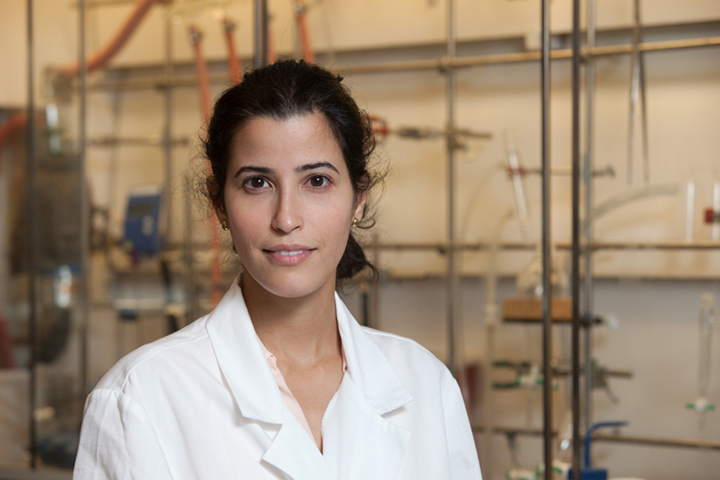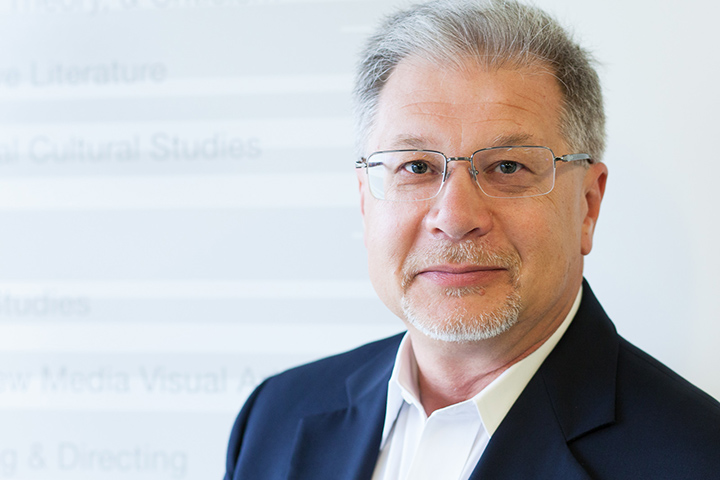
By:
- Judy Piercey
Published Date
By:
- Judy Piercey
Share This:
What’s New at Founders’ Day 2012
Founders’ Day itself is not new at UC San Diego. Launched in 2010 during the campus’s 50th Anniversary, the tradition celebrates the anniversary of UC San Diego’s founding and the innovation that has helped us become one of the top 10 public universities in the nation. The 2012 celebration will build upon previous years and feature exciting, updated programming.
First, is an added feature to the daytime Nov. 16 Founders’ Day program that will celebrate history in the making – the investiture of UC San Diego’s eighth chancellor, Pradeep K. Khosla. After the investiture, attendees can enjoy a variety of free activities including interactive booths featuring various divisions, schools and units as well as gourmet food truck fare in Town Square.
That evening, attendees can experience the re-tooled Founders’ Symposium at the Rady School of Management—a relaxed “lounge” setting where six dynamic individuals from UC San Diego will share why “they do what they do.” The free, 10-minute interactive discussions offer information in an intimate setting about relevant research or topical issues, showcasing work that has real impacts on everyday lives.
In this issue and coming issues of ThisWeek@UCSanDiego, we will feature a brief, informal Q&A about each speaker and their work, passions and personal insights that will give you a hint of what you will learn at the Symposium. For complete information about Founder’s Day events and activities, please visit founders.ucsd.edu.
Adah Almutairi, Director, Center of Excellence in Nanomedicine

Adah Almutairi
Can you tell us a bit about your background?
I was born in Oregon, but went to school in California. I spent a year in community college in Glendale, then received a full scholarship to Occidental College in Los Angeles —I was a track athlete, although only Division III—where I majored in chemistry. I’ve always been a Southern California person, so I earned my Ph.D. in materials chemistry at UC Riverside. Then, I did three years of post doc work with plastic robotics and polymers that move—Walt Disney funds that kind of work for masks and models, as well as NASA for lightweight plastics.
Something people may not know about me—I can juggle and have gone to the Catalina Island juggling festival every year since 2000. My roommate in college was a juggler, specializing in pins (clubs), so that is how I started.
What will your 10-minute discussion be about?
Title: Art of Falling Apart.
We build materials that fall apart on demand, taking advantage of these properties for a number of applications. We use light as a remote control for medical applications. For example, if the materials are used for an ocular drug delivery, when the patient walks outside and their eye is exposed to light, the encapsulated material falls apart and the drug is released. Or these materials could fall apart in response to inflammatory conditions, say for cancer and heart disease, and we are the first to do that. We wrap diagnostics in this material, and the diagnostics won’t turn on until it senses inflammation. When the body is inflamed, it’s like “Inflammation on Aisle 7 and 10”—the drug delivery deals only with those areas, and stops when the inflammation subsides.
Why do you do what you do?
What I want to accomplish is to be able to develop diagnostics that are more sophisticated and smarter so they turn on and off. Now, you just inject and they’re always on. I want to create things that are smart enough to only turn on in the disease environment. We’re also starting to use near infrared, a wavelength of light gamma x-rays that physicians can use as a tool to see in the body. Almost every wavelength in the electromagnetic spectrum has been used to investigate disease. But almost no one is using near infrared light —it is underused for a number of reasons, but now technology is about to make it happen.
What is fun about your work?
The discovery part, when things work. When we go into the lab, 90 percent doesn’t work, which makes that 10 percent so much sweeter. No need for motivation—ideas just pop and I can’t wait to get into the lab and work on it. It’s so fun, and we enjoy having a societal impact.
What is exciting about your work?
The excitement of having an idea, and trying different things and getting it to work. The excitement of working on the frontier, discovery and a sense of achievement —it takes a lot of perseverance, and a sense of optimism that it will work. In all honesty, ideas come to me … I get excited and they chase after me.
Why does your work matter?
I hope that one day we can commercialize these applications. One of the things I’m working on now is to use near infrared light to melt fat for cosmetic procedures and to tighten skin—we’re doing it now. I had a baby in 2010 and put on weight, and I wish that I could melt this fat away. I had idea, and got back into the lab. Using pieces of chicken and bacon from the supermarket, I put it in a solution already used in liposuction, injected it in in the fat layer, exposed the skin and then we could just syringe out anything. I started a company, which is patented by the university.
For some of the other materials, it is hard to predict when they will be used—maybe in ten years. It’s very difficult to tell. We continue to stay focused. For us, the small steps are fun … we come up with a hypothesis, test it and test it again. Persistence and optimism are key; also just knowing that your ideas are going to work. I think you have to be born with that. It’s like running a marathon—every mile, every training session is fun in itself. It’s not just the goal, it’s the journey. Keep your eyes on the prize, that’s what I tell my students.
Why should people come to see you on November 16?
I hope that they will learn that research at academic institutions can impact them in real ways, from detecting early signs of disease to cosmetic procedures to improve their lives.
Seth Lerer, Dean, Division of Arts & Humanities

Seth Lerer
Can you tell us a bit about your background?
I grew up on the East Coast and taught for many years at private universities before joining UCSD in 2009. As I look back on it, I realize that I have been in school since I was 5 years old. I’ve always felt at home in the classroom, in the theatre and the concert hall, and I think of my previous experiences as giving me a true understanding of the arts and the humanities in all its forms.
What will your 10-minute discussion be about?
Title: The Social Impact of Reading and Writing
My research focuses on the history of reading, the technologies of literacy and the social impact of literature and language. As we enter an age of new, digital technologies, we need to understand how the media of literature and language have always been changing, and how the past can help us understand the present and plan for the future. What I do as a scholar is to recover past ways of understanding books and their personal and social use. What I do as a teacher is to bring that past to students faced with the challenges of understanding why reading matters. What I do as an administrator is seek to foster a creative dialogue between scholars and artists to show that cultural enhancement is the mark of a truly literate society.
Why do you do what you do?
My passion is the understanding of the world through words. I have studied language history and literary imagination and I hope to show students, colleagues and members of the community how vital it is that we not lose touch with our linguistic and literary past.
What is fun about your work?
What is fun about my work is teaching others. Sometimes, I can present a new discovery (a manuscript or printed book that few have seen before; an idea or a problem few have thought to solve). Other times, I can present something very familiar to me, but new to my audience or students (a fact about the history of the language, or a story about cultural change).
What is exciting about your work?
What is exciting about my work is the thrill of discovery: whether it is discovering something old in a library or seeing the faces of my students who discover for the first time something so familiar to me that I’ve forgotten how thrilling the idea can be.
Why does your work matter?
My work matters because it fosters an understanding of how people use language and literature to express themselves, to build social and family relationships and to live not just in the real world but in the world of the imagination. My work on the history of the English language and on Children’s Literature, in particular, has led thousands of readers and listeners to a new awareness of how narrative, imagery, diction and the physical artifacts of books become the templates for living our lives.
Why should people come to see you on November 16?
I hope that people will come to listen to me and learn that scholarship is exciting; that the humanities are a vital source of energy on a public university campus; that the book is not dead; that digital technologies may supplement but never truly replace the printed or handwritten text; and that the experience of teaching and reading can be engaging, funny, moving, and life affirming.
Share This:
You May Also Like
Stay in the Know
Keep up with all the latest from UC San Diego. Subscribe to the newsletter today.


